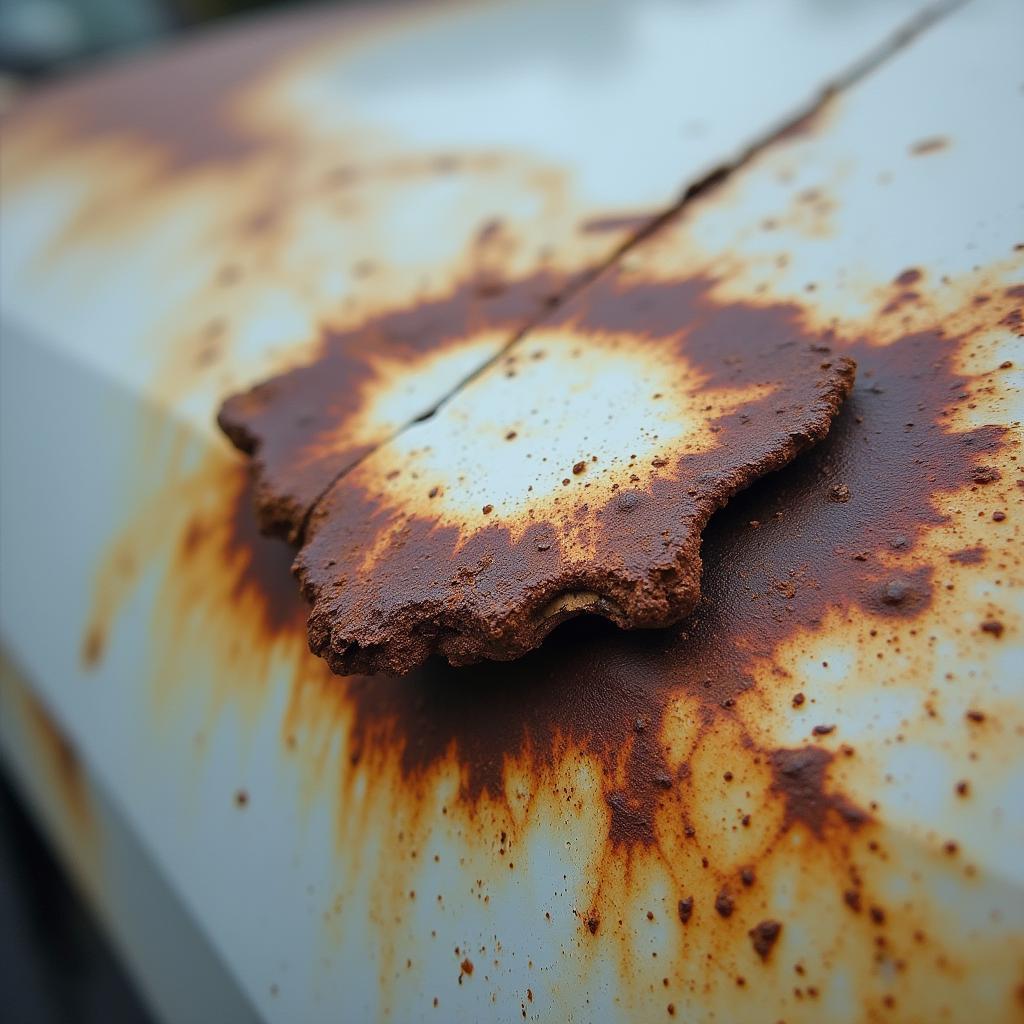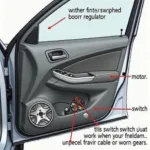Rust on your car’s paint is more than just an eyesore; it’s a sign of corrosion that can eat away at the metal and compromise its structural integrity. If left untreated, even a small paint chip can turn into a major problem. Fortunately, addressing it early on is relatively simple. This guide will walk you through the steps on how to repair paint chip rust on your car and prevent it from spreading.
Understanding the Enemy: Why Paint Chips Rust
Before we delve into the repair process, it’s crucial to understand how rust forms. When a paint chip exposes the bare metal underneath, it becomes vulnerable to the elements. Oxygen, moisture, and road salt react with the iron in the metal, leading to oxidation and the formation of iron oxide, commonly known as rust.
Essential Tools and Materials You’ll Need
Having the right tools and materials is crucial for a successful repair. Here’s a list of what you’ll need:
- Cleaning Supplies: Soap and water, microfiber cloths, rubbing alcohol
- Sanding Supplies: Sandpaper (220-grit, 400-grit, 600-grit), sanding block
- Rust Converter: This product chemically transforms rust into a paintable surface.
- Primer: Choose an automotive primer specifically designed for metal surfaces.
- Touch-Up Paint: Match the paint color to your car’s existing finish. You can obtain this from your car dealer or an auto parts store.
- Clear Coat: Protects the paint and provides a glossy finish.
- Masking Tape & Paper: To protect areas you don’t want to paint.
- Gloves & Safety Glasses: For your protection during the process.
Step-by-Step Guide to Repairing Paint Chip Rust
Follow these steps to effectively repair minor paint chip rust on your car:
-
Clean the Area: Thoroughly wash the affected area with soap and water. Use rubbing alcohol to remove any remaining grease or residue.
-
Sand the Rust: Using 220-grit sandpaper, gently sand the rusted area. The goal is to remove the rust and any loose paint. Be careful not to sand down to bare metal beyond the rusted area.
-
Apply Rust Converter (if needed): If you’ve sanded down to bare metal, apply a rust converter following the manufacturer’s instructions. This step is crucial to prevent future rust formation.
-
Prime the Area: Once the rust converter is dry (if used), apply a thin coat of automotive primer to the sanded area, extending slightly beyond the repair zone. Allow the primer to dry completely.
-
Sand the Primer: After the primer dries, lightly sand it with 400-grit sandpaper to create a smooth surface for the paint.
-
Apply Touch-Up Paint: Using a fine-tipped brush or a touch-up pen (depending on the paint you’ve chosen), carefully apply thin coats of touch-up paint to the chipped area. Allow each coat to dry completely before applying the next.
-
Apply Clear Coat: Once the touch-up paint is dry, apply a thin layer of clear coat to seal and protect the repair.
-
Sand and Buff (Optional): For a seamless finish, you can wet sand the area with 600-grit sandpaper after the clear coat has cured (usually 24-48 hours). Follow this by buffing with a polishing compound.
Expert Insights
“Many car owners underestimate the damage that even a small paint chip can cause,” says John Smith, an automotive expert with over 20 years of experience. “Addressing rust promptly is key. If you catch it early, you can often repair it yourself using the steps outlined above. However, for larger areas of rust or if you’re uncomfortable tackling the repair, it’s always best to consult a professional.”
Preventing Future Paint Chip Rust
Prevention is always better than cure. Here are some tips to protect your car from future paint chip rust:
- Regular Washing: Wash your car frequently to remove dirt, salt, and other contaminants.
- Waxing: Apply a coat of wax every few months to create a protective barrier.
- Touch-Up Chips Quickly: Don’t ignore even small paint chips. Touch them up promptly to prevent rust.
- Careful Parking: Park in a garage or carport whenever possible.
Conclusion
Repairing paint chip rust on your car is a manageable task that can save you from costly repairs down the line. By following this guide and investing a little time and effort, you can keep your car looking its best and maintain its value. Remember, addressing the issue early and taking preventative measures are your best defenses against the damaging effects of rust.



